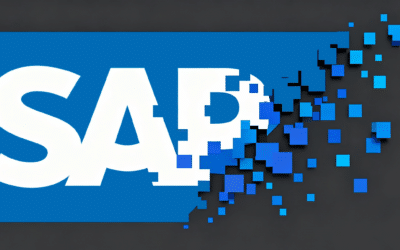
Addressing Tech Debt in IT Environment Rationalization
JUN, 2023
by Andrew Walker.
Author Andrew Walker
Andrew Walker is a software architect with 10+ years of experience. Andrew is passionate about his craft, and he loves using his skills to design enterprise solutions for Enov8, in the areas of IT Environments, Release & Data Management.
Addressing technical debt is a crucial aspect of IT environment and application rationalization. In this post, we will dive into the meaning of tech debt, discuss how to assess its impact, and provide actionable steps to effectively address it. By understanding and tackling tech debt, you can optimize your IT infrastructure and ensure long-term success in today’s rapidly changing technological landscape.
Enov8 IT & Test Environment Manager
*Innovate with Enov8
Streamlining delivery through effective transparency & control of your IT & Test Environments.
Understanding Tech Debt
Tech debt is a widely discussed concept in the software development industry. It refers to the consequences of taking shortcuts or making trade-offs during the development process that result in suboptimal code or system design. These shortcuts can accumulate over time and create inefficiencies, increasing the complexity and cost of maintaining and enhancing the software.
Tech debt is not a tangible metric like financial debt, but it can be measured in terms of its impact on the development process and system performance. For example, it can lead to increased development time, reduced system stability, and higher maintenance costs.
The Legacy of Past Technology Choices
When discussing tech debt, we often refer to the repercussions of past decisions regarding IT investments. Previous attempts to cut corners on IT budgets may have financial consequences that manifest in the present.
For instance, imagine a company that decided not to invest in a cloud migration a few years ago due to financial constraints. While it provided immediate cost savings, the company may now find itself falling behind competitors who have embraced cloud technology. The decision to delay the migration resulted in accumulating tech debt, which now needs to be addressed.
Think of tech debt as taking out a loan from the future. By delaying system upgrades or architectural improvements, you achieve immediate savings. However, just like with a loan, eventually, you’ll have to repay that debt with interest, which represents your tech debt.
Alternatively, you can consider tech debt as a form of tech “credit.” Undertaking a digital transformation now means you won’t have to worry about it in the future. You can enjoy additional revenue and reduced costs resulting from the investment as profit.
The Impacts of Tech Debt
Tech debt has various impacts on an organization, both in financial and non-financial terms. Let’s explore some examples:
Financial Consequences:
- Expenses incurred when upgrading systems become unavoidable due to outdated technology or architectural limitations.
- Missed cost savings from not adopting more affordable cloud-based solutions.
- Regulatory fines due to inadequate cybersecurity measures or non-compliance with data protection regulations.
- Revenue loss during system outages or performance degradation.
- Increased costs of maintaining and supporting legacy systems that are no longer efficient or compatible with modern technologies.
Non-Financial Impacts:
- Performance: Slower systems and inefficient processes can waste time and reduce employee productivity.
- Customer Trust: Poor technology can negatively impact customer satisfaction and loyalty, leading to potential revenue loss.
- Talent Retention: Outdated workplace tools can frustrate employees, leading to higher turnover rates.
- Information Silos: Critical system knowledge and documentation may be at risk if key employees leave and there are no proper processes in place to capture and share that knowledge.
- Missed Opportunities: Outdated technology may prevent collaboration and integration with partners or limit the organization’s ability to seize new business opportunities.
Is Tech Debt Always Detrimental?
Tech debt is a broad concept, and it’s nearly impossible for any company to eliminate it entirely. Furthermore, even if complete elimination were possible, it may not be desirable. Investing in a “perfect” application portfolio would be wasteful.
Decisions about tech debt should consider the broader context. For example, choosing not to migrate to the cloud this year may result in tech debt, but if the migration is financially unfeasible or poses significant security risks, it might be the correct decision.
Therefore, a certain level of tech debt is not only acceptable but may be strategically necessary. The question then arises: how can you determine the appropriate level of tech debt?
Defining an Acceptable Level of Tech Debt
To determine when tech debt becomes a pressing issue, we must revisit its definition: tech debt assigns a financial value to deficiencies in your tech stack, enabling a direct comparison with the cost of addressing them.
By treating tech debt as a financial value, you can calculate its overall cost based on the aforementioned impacts. Contrasting this with the cost of a transformation to resolve the tech debt yields your technical debt ratio (TDR).
Technical Debt Ratio (TDR) = (Tech Debt ÷ Cost Of Transformation) × 100
If your TDR exceeds 100%, it indicates the need to take action. If it falls below 100%, the problem may not require immediate resolution.
A high TDR signals the necessity of managing tech debt and provides evidence to secure stakeholder investment. When the cost of fixing a problem is lower than the cost incurred by the problem itself, addressing the issue becomes the obvious choice.
However, before calculating your TDR, you must address two crucial questions:
- What is the financial value of your tech debt?
- Where should you invest to repay the debt?
Addressing Tech Debt with Enov8
Enov8 offers a platform that empowers you to identify and document all the applications in your IT environment. Automated surveys collect comprehensive data on each application, providing a holistic overview.
By leveraging Enov8, you can swiftly identify areas where tech debt causes bottlenecks and determine the obsolescence timeline of your applications. This information enables you to create a transformation plan for application modernization.
Enov8 enables scalable visualization tailored to individual user needs, allowing you to quickly identify trouble spots related to tech debt and understand the necessary steps to address them. As a result, calculating your technical debt ratio (TDR) becomes a straightforward process.
With Enov8, you can optimize efforts, expedite decision-making, and ultimately reduce application costs while effectively addressing tech debt in your IT environment.
Relevant Articles
Your Essential Test Environment Management Checklist
“Test Environment Management Checklist.” Yep, that sounds like a mouthful, but don’t let that discourage you. The idea here is quite simple—adopting a checklist to evaluate the soundness of your test environment management approach. Even though the idea sounds simple...
A Detailed Guide to SAP Data Masking
SAP systems handle some of the most sensitive data in the enterprise: financial transactions, HR information, supplier records, customer profiles, operational details, and more. For that reason, copying production data into non-production systems without modification...
Release vs Deployment Management: What’s the Difference?
In the always-an-adventure world of IT service management, there are several key processes that are essential for delivering high-quality services to customers and end-users. Two of the most critical processes are release management and deployment management....
7 Tools to Help with Application Rationalization
Application rationalization is the process of identifying which applications an organization should keep, update, consolidate, or retire. Think of it as a financial adviser, but instead of your investment portfolio, it's your application portfolio. Most companies take...
Pairing DevOps with Test Environment Management
For many organizations, DevOps is the best practice for efficiency. However, this model doesn’t come easily as the organization needs to put certain things in place. For example, the firm needs to incorporate the right tools to ensure its delivery pipeline and...
8 DevOps Anti-Patterns You Should Avoid
It’s the normal case with software buzzwords that people focus so much on what something is that they forget what it is not. DevOps is no exception. To truly embrace DevOps and cherish what it is, it’s important to comprehend what it isn’t. A plethora...











